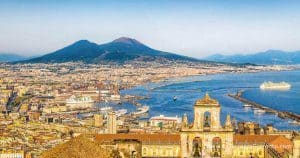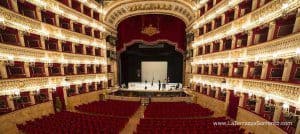Welcome to Naples
Italy’s third-largest city is one of its oldest, most artistic and most appetising. Naples’ centro storico (historic centre) is a Unesco World Heritage Site, its archaeological treasures are among the world’s most important, and its swag of vainglorious palaces, castles and churches make Rome look positively provincial.
Then there’s the food. Blessed with rich volcanic soils, a bountiful sea, and centuries of culinary know-how, the Naples region is one of Italy’s epicurean heavyweights, serving up the country’s best pizza, pasta and coffee, and many of its most celebrated seafood dishes, street snacks and sweet treats.
Certainly, Naples’ urban sprawl can feel anarchic, tattered and unloved. But look beyond the grime, graffiti and occasional gruffness and you’ll uncover a city of breathtaking frescoes, sculptures and panoramas, of unexpected elegance, of spontaneous conversations and profound humanity. Welcome to Italy’s most unlikely masterpiece.
In the last few years Naples has become one of the favourite destinations for all those Italian and foreign tourists who love spending their holidays in cities of artistic interest.
Unlike cities in which art is stored in museums and daily life happens on the streets, Naples’s distinctive mark is its folclore: people living and working among the artistic beauties of the city.
Tourism has become a key factor in the city’s economy.
As fascinating as it is contradictory, ravishingly beautiful yet dilapidated and chaotic, Naples makes a brilliant winter break destination. It enjoys a mild, southern climate and a matchless natural setting on a wide azure bay, with the brooding bulk of Vesuvius, the Sorrentine Peninsula and Capri on the horizon. World-class monuments, some of the best food in Italy, a vibrant street life and a thriving contemporary art scene increase its appeal and, in the period leading up to Christmas, the city is at its most extrovert. Still central to any Neapolitan natale (along with the food, such as Christmas rococo cakes) is the centuries-old tradition of the presepe, or nativity crib, which sees crowds elbowing their way along the Spaccanapoli (the arrow-straight road that splits the ancient centro storico in two) en route to narrow Via San Gregorio Armeno to stock up on tiny figurines, some with moving parts, for their home cribs.
Italy’s third-largest city is looking better than it has in a long time. The piles of rubbish are gone, and traffic has been banned from much of the Lungomare (seafront) and large swathes of the centre. The completion of the metro system is in sight and the remodeling of the Piazza Garibaldi and Piazza Municipio areas, that has brought traffic to a near standstill in recent years, is almost finished. Moreover, private initiatives are seeing crumbling monuments spruced up, gardens tended and long-closed sights, such as the Cimitero delle Fontanelle and the church of Santa Maria del Purgatorio ad Arco, opening to visitors once again. Naples has often been dubbed Italy’s most underrated city, but that is changing. Tourist numbers are on the rise, so get there soon.
Le Stazioni dell’Arte. Many of Naples’ treasures are below street level, not least some of the most impressive metro stations in the world. The first “art station” opened in 2001, but the ambitious idea for a public art project in the underground system dates from the late 1980s. The 11 stazioni to date have involved both emerging local artists and architects and major international names.
The most recent openings are Oscar Tusquets Blanca’s 2013 Toledo stop, with its eye-popping escalator descent under the towering Crater de Luz mosaic, and Karim Rashid’s 2011 Università, a joyous riot of youthful bubble-gum colours, psychedelic designs and mirrors. Municipio, inaugurated in June, is a work-in-progress: completion has been delayed by the discovery of Roman remains (including several ships) on the site.
Museo Archeologico Nazionale. If you only visit one museum in Naples, make it this. The Farnese family’s peerless haul of ancient Greco-Roman art and artefacts forms the core of the collections, which are housed in a vast, 17th-century former university building.
The labelling is almost non-existent and the lighting is poor, but nothing can detract from showstoppers such as the colossal Farnese Bull, the pumping-iron Hercules and the pair of powerful tyrant killers – all Roman copies of early Greek sculptures. Of the collections on the upper floors, best are the exquisite mosaics from Pompeii and Herculaneum and the saucy ancient erotica in the Gabinetto Segreto, plus the bronzes from Villa dei Papiri in Herculaneum, among which the five female dancers and pair of lean athletes, poised for flight, are standouts.





